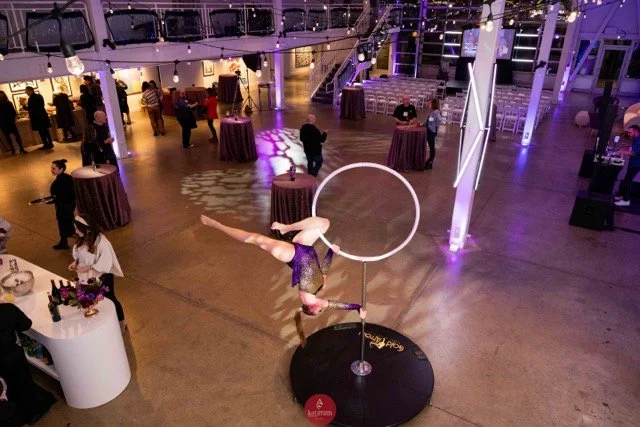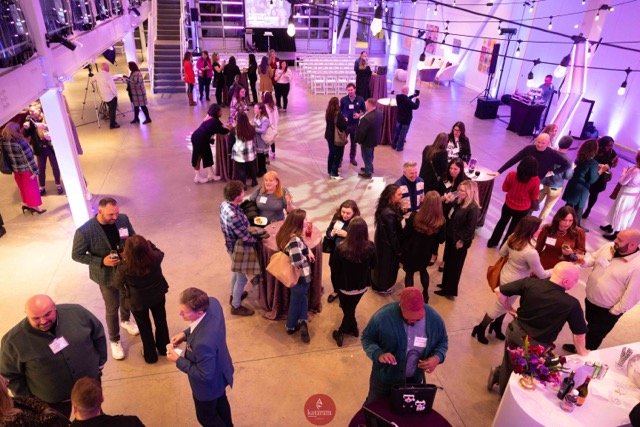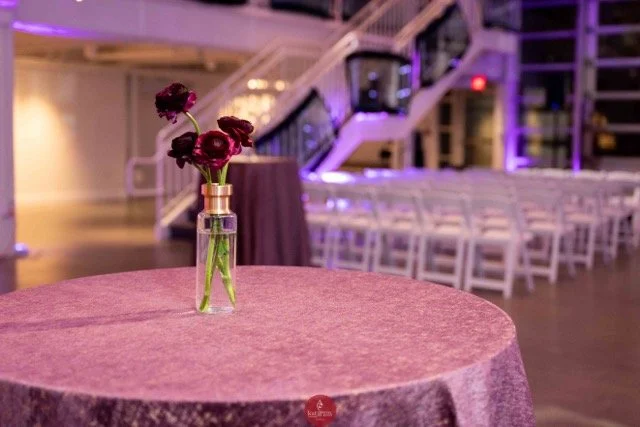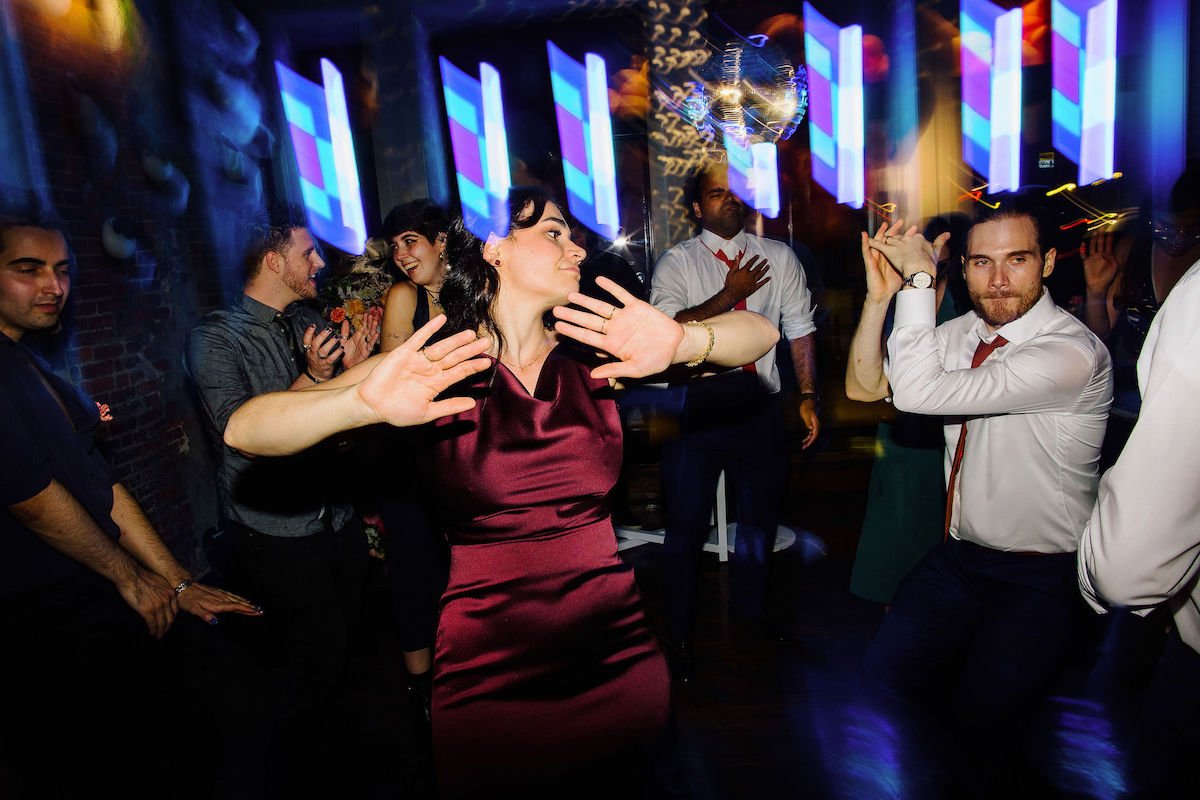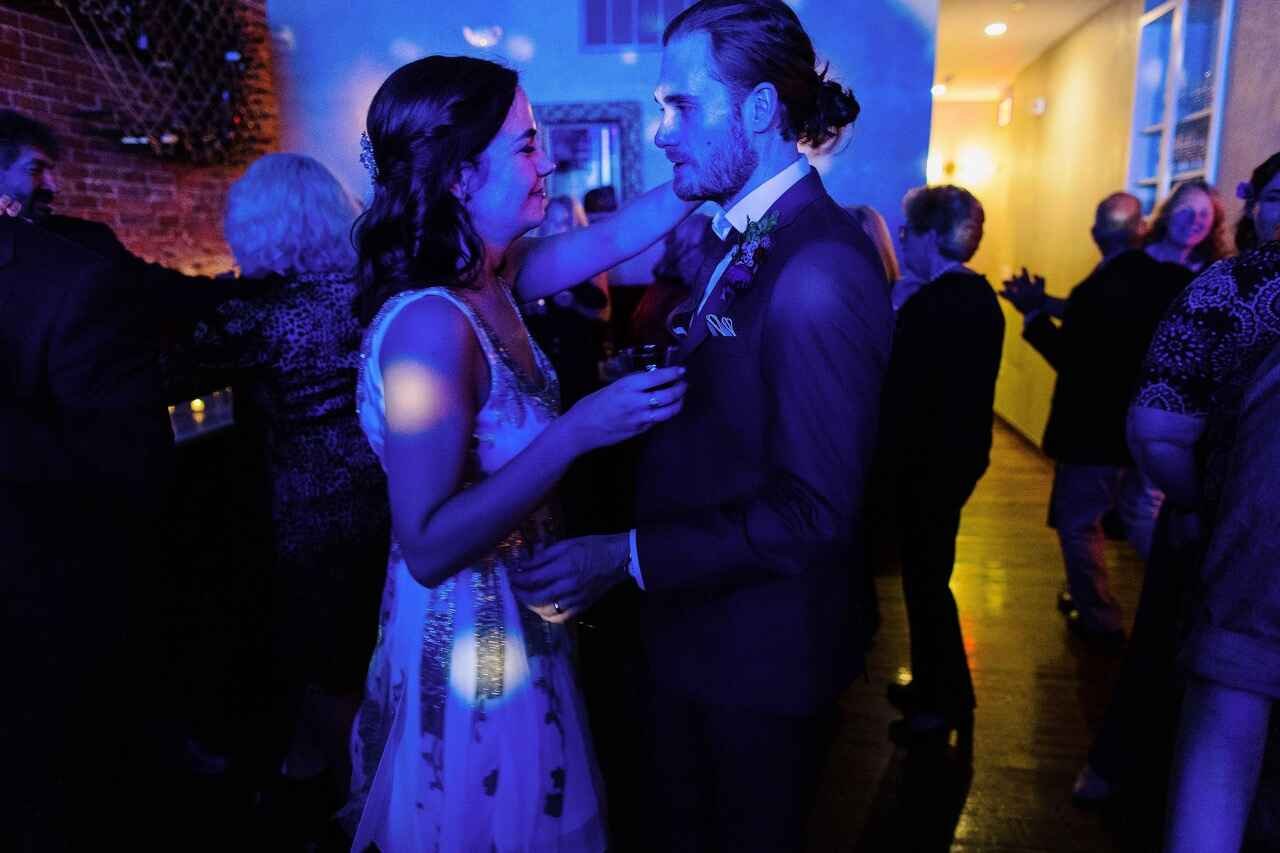Your Ultimate Guide to Unforgettable Wedding Lighting
Updated: 7/31/25
Are you currently planning your wedding and wondering how to create a breathtaking atmosphere that your guests will talk about for years? Wedding lighting is often an afterthought, but it's a critical element that can transform your venue from ordinary to extraordinary. This guide is for couples, wedding planners, and anyone asking, "How do I use lighting to make my wedding feel truly special?"
This guide provides everything you need to know, from the different types of lighting to the latest trends, ensuring your celebration has the perfect glow.
Key Questions This Guide Answers:
What are the different types of wedding lighting and how should I use them?
How can color theory and lighting trends enhance my wedding theme?
How do I choose the right lighting for my specific venue?
Why should I hire a professional for my wedding lighting?
Can lighting really be integrated with music to create a dynamic party atmosphere?
Understanding the Four Main Types of Wedding Lighting
Professional lighting goes far beyond basic uplighting. To design a cohesive and beautiful look, it’s essential to understand these four core categories:
Ambient Lighting: This is the foundational light that fills your venue, creating the overall mood. It includes existing fixtures like chandeliers but is most effectively managed by adding elements like string lights, cafe lights, or uplighting. For a professional, polished look, it's crucial to ensure this lighting is dimmable and controllable, avoiding the unflattering "all on, all off" look of many built-in systems. While some venues may provide built-in uplighting, it’s often not well-thought-out or smooth. This is why enlisting a professional who will design an aesthetic that works with your overall vision is so important.
Accent Lighting: Think of this as the "spotlight" for your wedding's most beautiful details. Accent lights, such as pin-spots, are used to highlight key features like your wedding cake, floral arrangements, guest tables, or a special piece of art. These are great for drawing attention to details while also drawing attention away from less flattering aspects of the venue.
Task Lighting: This practical lighting ensures key areas are well-lit for safety and functionality. The bar, buffet, and pathways need clear visibility. While functional, task lighting can still be beautiful and integrated into your overall design, using elegant fixtures or strategically placed accent lights. This lighting can also be provided through the use of pin-spots or more traditional lights.
Texture Lighting: Ready to get creative? Texture lighting uses a light with the ability to use a gobo to create custom patterns, images, or logos onto walls, floors, and ceilings. A gobo is usually a piece of metal that has a pattern, logo, or custom graphic. More advanced options include glass gobos, which can add more complex and colorful textures or logos. This is how you can project a dynamic floral pattern across a wall, a custom monogram on the dance floor, or a twinkling starry night sky on the ceiling, adding a high-end, personalized touch.
The Transformative Power of Light and Color
Using lighting effectively is like painting with light. A great lighting plan can make your venue feel cozy and intimate or modern and electric.
Color Theory: Color plays a major role in setting the mood. Warm colors like reds, oranges, and yellows evoke a sense of coziness and intimacy, perfect for dinner and cocktail hour. Cool colors such as blues and purples create a more modern, elegant ambiance. A skilled lighting designer knows how to transition between these moods, perhaps starting with a warm, soft glow for dinner and shifting to a more vibrant, dynamic color scheme for the dance party.
Latest Trends: Modern wedding lighting leans heavily on technology for both aesthetics and sustainability.
Wireless and battery-operated LED lights are at the forefront, offering unprecedented flexibility, eliminating unsightly cords, and making installation seamless.
Intelligent lighting control systems allow for precise, real-time adjustments, enabling a smooth transition from a romantic first dance to a high-energy dance floor with synchronized lighting effects. This level of control allows for more nuance and gradual shifts in color and intensity to alter the mood of your wedding venue. Our approach at MixLux prioritizes these cutting-edge, wireless solutions to create a sophisticated and dynamic experience.
Planning Your Wedding Lighting: From Venue to Vision
Assessing Your Venue: Your venue's architecture and natural lighting play a significant role in determining your lighting needs. Outdoor venues might require more lighting post-sunset, while indoor venues might have specific restrictions or opportunities for creative solutions. Ask if the lighting in your venue can be dimmed or broken down into sections. If it can’t, it's even more reason to have professional lighting that can take the place of the venue’s and provide a better ambiance.
Customizing Your Lighting Plan: Personalizing your lighting to reflect your style and theme is where the magic happens. For a whimsical touch, consider fairy lights or soft, dappled lighting, which I prefer over bistro lights. Bistro lights are often too bright and lack dimming control, which can wash out your venue with light and make the dance floor uncomfortable for your guests—there's a reason nightclubs are dark! For a contemporary look, geometric patterns or stark contrasts in lighting can be striking, especially in modern and industrial-style venues that lend themselves to more creative design choices.
Working with Professionals: Hiring a professional lighting team is crucial for turning your vision into reality. I understand the nuances of lighting, from the technical setup to artistic design, and am able to implement both. One of my main focuses is making sure that we can integrate the lighting with the music when we switch into the party part of the evening. I want them to work together and complement each other in unique and dynamic ways without being overpowering. During our planning process, we’ll discuss how you want the space and your dance floor to feel.
The Role of Technology and Safety in Wedding Lighting
Advanced Lighting Technologies: My approach incorporates state-of-the-art technologies. Wireless LED lights offer flexibility in placement and design. It’s my goal to use completely wireless, battery-operated lighting whenever possible. There are a few different control technologies that we use depending on the event's needs, one of which allows us to create highly detailed light shows for each song, while the other allows us to create more dynamic environmental lighting.
Interactive Lighting Features: Interactive lighting, which responds to music or movement, adds an element of surprise and delight. This can range from a dance floor that lights up in response to steps to ambient lighting that changes with the evening's tempo. The ability to change the lighting to reflect the changes in energy in the room is one of the greatest benefits of good event lighting. We can use light to send subconscious cues to your guests that the energy is about to change, or that something will be happening soon, adding a bit of theater to your wedding!
Safety Considerations: A professional prioritizes safety in every installation. We ensure all fixtures are securely mounted, wires are safely routed, and all lighting elements comply with safety standards. We also balance the need to bring down the overall brightness while still making sure pathways are lit for safety. I always make sure that we program emergency lighting as well, should the unlikely need arise.
Logistical Planning: A professional team manages all logistical aspects, from setup to breakdown. I want to make sure we are addressing the needs of other vendors such as the venue and catering. Most importantly, I want to work with your photo and video team to make sure that our light only helps them and makes their life easier.
Better lighting makes for better photos and videos, whether they are taken by pros or your iPhone!
Real-World Examples from MixLux
Case Study 1: Artist's for Humanity, Boston: For this event, I focused on purple hues to match the event host’s logo and brand. The built-in bistro lights, while not a favorite of mine, worked well here as they were dimmable and added the right amount of overall glow and warmth. I used a combo of uplighting, pin-spotting, texture projection, and pixel tubes to create the overall look.
Photos Courtesy of: Kataram Studios
Case Study 2: SRV Boston: This wedding was a 4.5-hour dance party, and the ability to morph the space through lighting definitely contributed to its success. My couple requested a disco ball after seeing it at another event, and it created a cool dynamic between classic dance lighting and the more modern pixel tubes that were mounted on the windows.
Photos Courtesy of: Zac Wolf Photography
Conclusion
Lighting is much more than mere illumination; it is the paintbrush that colors your wedding canvas. It has the power to transform a space, set the mood, and create an atmosphere that is uniquely yours. To explore how we can bring your wedding lighting and music dreams to life, I invite you to reach out and discuss how my team and I at Brian Smith Productions can design an atmosphere through curated music and light.



